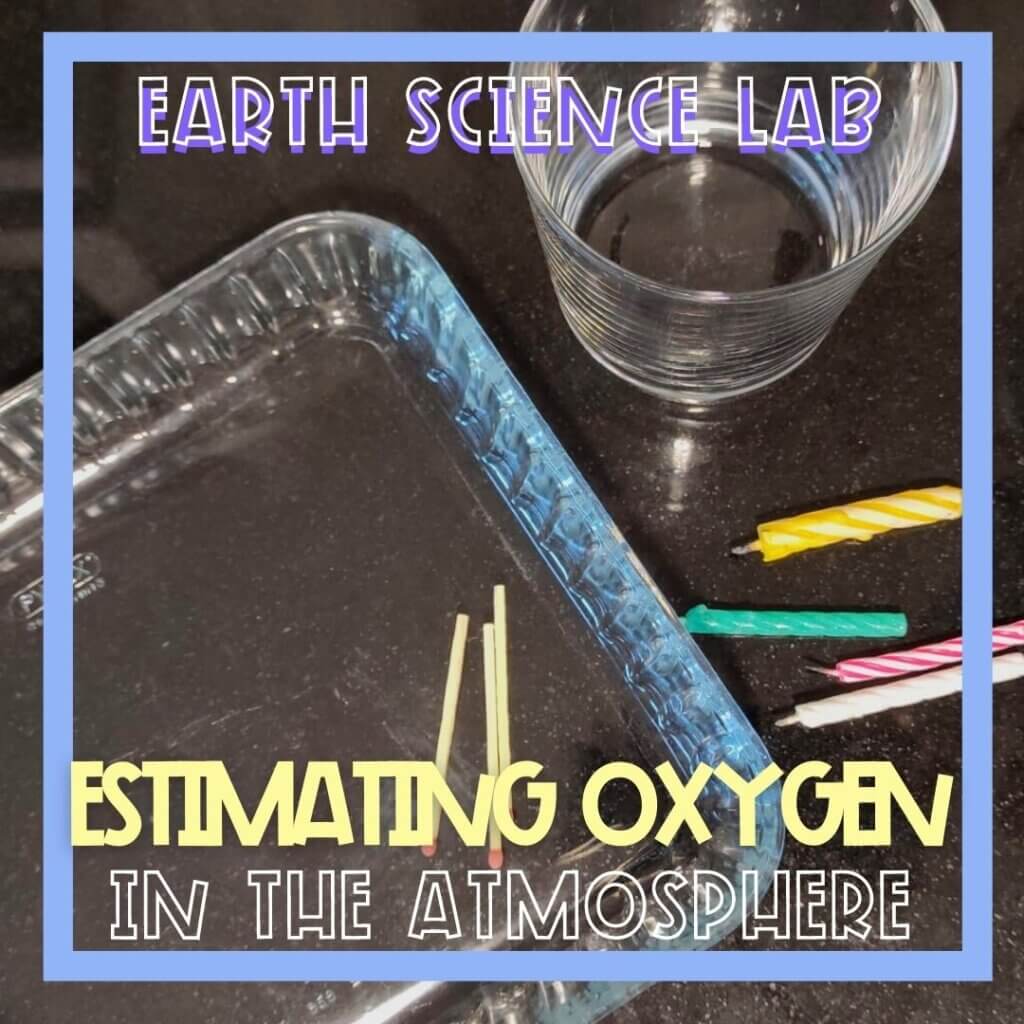In this blog post I am going to explain the process I used to teach my middle schoolers how to calculate the percentage of oxygen in air. It is an easy process that gives a (very) rough approximation, and is a good idea for an earth science lab.
Contenidos
Materials needed
- Birthday candle
- Water
- Food colouring
- Container
- Tall beaker
I have seen on the web that some people did this earth science lab with a test tube, but it does not work for me, I cannot get it to work for me, and neither could my students.

Instructions for prepping the earth science lab
The first thing I do is I ask my students to take notes of the materials on their bench as well as taking good notes of the procedure.
I like doing labs in stations, so sometimes I like the students taking notes in their notebooks, as any lab is subject to being on an exam.
I also like students answering questions about theoretical aspects of the lab, in this case, it is questions about the atmosphere.
That is when the true lab starts. You can find the instructions directly below.
Report on how to calculate percentage of oxygen in air
- Measure the height of your beaker and write the measurement down in your notebook.
- Light the birthday candle carefully and place a little melted wax in the bottom of your container, and quickly place the birthday candle on top of the wax so it stays in place.
- Fill the container with about an inch of water (if using food coloring, add it to the water before).
- Get the beaker you measured, put it upside down on top of the birthday candle, and answer the following questions
What happened? Why does the water level rise?
The idea behind these calculations, is that you can calculate the amount of oxygen by eliminating it by burning it, and seeing how the water level rises.
The oxygen is burned, and it leaves a space, a vacuum that is then occupied by the water level that rises form the container.
Measure the heights the water has risen to and fill in a table with the height of water in the beaker.
Using the average height of the water you have above, calculate the amount of oxygen in the atmosphere. To do so, you need to apply the following formula:
Percentage of oxygen=(height of water(π) r^2)/(height of beaker(π) r^2 )=(height of water)/(height of beaker)
I then ask them to make an analysis of their results, and criticize the experimental setup, or see if they can come up with a better way to calculate the percentage of oxygen.
This is one of three labs I have done with my earth science students, you can find the stations that I have used. You have the link here: